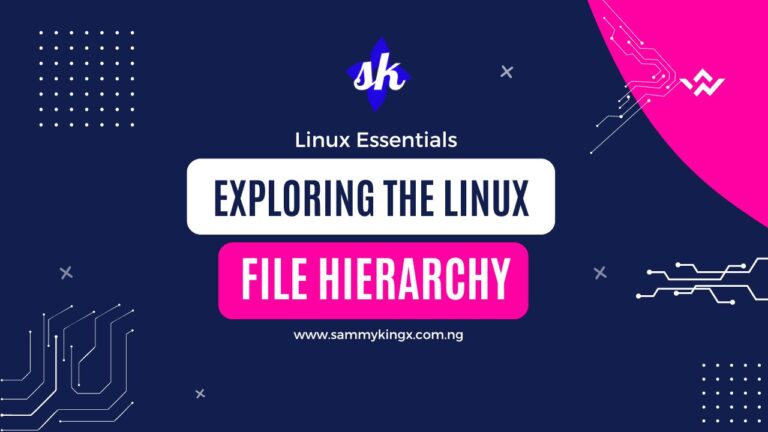Book Appointment Now

Introduction to Linux: The mother OS
Have you ever wondered what powers some of the world’s fastest supercomputers, the largest cloud computing platforms, and even your favorite smartphone operating system? The answer lies in a remarkable operating system called Linux. Linux is everywhere, from the servers that host your favorite websites to the Internet of Things (IoT) devices in your home. It’s an open-source powerhouse that has revolutionized the way we use computers and sparked a global movement of collaboration and innovation. Let’s embark on a journey to uncover the fascinating world of Linux and explore why it matters.
What is Linux?
Linux is a family of open-source Unix-like operating systems that was initially developed by Linus Torvalds and a community of dedicated developers. An operating system is the software that manages and controls computer hardware, providing a platform for other software to run on. Linux, at its core, consists of a kernel (the central component) and a collection of system libraries and utilities that enable interaction with the hardware and provide a rich set of functionalities.
The Linux kernel was first released to the public in 1991, and it quickly gained traction due to its stability, performance, and open-source nature. Over the years, Linux has grown into a diverse ecosystem with numerous distributions (also known as distros) tailored for different purposes, from desktop computing and servers to embedded systems and supercomputers.
Open-Source and Community Collaboration
One of the defining characteristics of Linux is its open-source nature. Open-source software is developed and distributed with its source code made publicly available, allowing anyone to view, modify, and distribute the software freely. This transparency fosters a culture of collaboration and encourages contributions from a global community of developers, enthusiasts, and users.
The Linux community is a vibrant and diverse group of individuals who contribute to the development, improvement, and support of the operating system. Anyone can participate in the community by providing code contributions, bug reports, documentation, translations, or simply by helping others through forums, mailing lists, and user groups. This collaborative model has led to rapid innovation, continuous improvements, and a robust ecosystem of software packages and distributions.
Linux Distributions
A Linux distribution, or distro, is a specific implementation of the Linux operating system that includes the Linux kernel, system libraries, and a collection of pre-installed software applications. Distributions are created by individuals, community groups, or companies, each with their own unique features, package management systems, and target audiences.
Some popular Linux distributions include:
Ubuntu: Ubuntu is one of the most widely used Linux distributions, known for its user-friendliness and extensive community support. It is based on Debian and offers a range of flavors with different desktop environments, such as GNOME, KDE, and Xfce.
Debian: Debian is a stable and highly customizable distribution that forms the basis for many other distros, including Ubuntu. It has a strict commitment to free software and a large repository of software packages.
Fedora: Fedora is a community-driven distribution sponsored by Red Hat. It is known for its close integration with Red Hat Enterprise Linux (RHEL) and is often used for testing new technologies that may eventually make their way into RHEL.
openSUSE: openSUSE is a popular distribution that focuses on providing a user-friendly experience and a rich set of features. It offers two versions: Leap, which is stable and suitable for production use, and Tumbleweed, a rolling release version that receives frequent updates.
Arch Linux: Arch Linux is a lightweight and highly customizable distribution that follows a “do-it-yourself” philosophy. It provides a minimal base system, allowing users to build their own customized environment.
Linux Mint: Linux Mint is designed to provide an elegant and comfortable desktop experience, especially for users transitioning from Windows. It offers a familiar interface and includes multimedia codecs and popular software right out of the box.
These are just a few examples, and there are hundreds of other Linux distributions available, each catering to different needs and preferences.
Linux in Everyday Life
You may be surprised to learn that Linux powers many of the devices and services we use every day:
Android smartphones and tablets: Android, the world’s most popular mobile operating system, is based on the Linux kernel. It powers billions of devices, from budget phones to high-end tablets.
Web servers and cloud computing: Linux is the dominant operating system in web servers and cloud infrastructure. Major cloud providers like Amazon Web Services (AWS), Microsoft Azure, and Google Cloud Platform heavily rely on Linux for their services.
Supercomputers and scientific research: Linux is the operating system of choice for supercomputers and high-performance computing. It provides the stability, scalability, and performance required for complex scientific calculations and simulations.
IoT and embedded devices: Linux is widely used in Internet of Things (IoT) devices, smart home hubs, routers, and other embedded systems. Its small footprint and real-time capabilities make it ideal for these applications.
Desktop and laptop computers: Linux distributions offer a range of user-friendly desktop environments, making it a viable alternative to Windows and macOS for everyday computing tasks.
Benefits of Linux
Linux offers numerous advantages that have contributed to its widespread adoption:
Stability and Performance: Linux is known for its stability and reliability, with robust error handling and recovery mechanisms. It has a reputation for efficient memory management and excellent performance, even on older or low-spec hardware.
Security: Linux has a strong security track record due to its open-source nature, frequent security updates, and robust permissions system. The vast community of developers and security experts helps identify and patch vulnerabilities quickly.
Customizability and Flexibility: Linux offers unparalleled flexibility, allowing users to customize their system to their exact needs. From the desktop environment to the kernel itself, everything can be tailored to suit specific requirements.
Free and Open-Source: Linux is free to use, distribute, and modify, thanks to its open-source licensing. This not only reduces costs but also promotes innovation and collaboration.
Community and Support: The Linux community provides extensive documentation, forums, and support resources. Users can quickly find answers to their questions, learn new skills, and contribute to the community themselves.
Software Package Management: Linux distributions come with package managers that simplify software installation, updates, and removal. This ensures that your system stays up to date with the latest software releases.
Getting Started with Linux
If you’re interested in trying out Linux, the best way to start is by choosing a distribution that suits your needs. Here are a few tips to get you going:
Research and choose a distribution: Consider your goals and experience level when selecting a distribution. If you’re new to Linux, Ubuntu or Linux Mint are excellent choices due to their user-friendly nature and extensive community support.
Try before you install: Most distributions offer “live” versions that allow you to boot and use the operating system directly from a USB drive without making any changes to your computer. This is a great way to test-drive Linux before committing to an installation.
Dual-boot or virtual machine: If you want to install Linux alongside another operating system, you can set up a dual-boot configuration or use a virtual machine. Both options allow you to run Linux and another OS on the same machine.
Explore and experiment: Linux provides a wealth of options for customization and experimentation. Don’t be afraid to try new things, tweak settings, and explore the vast array of software available in the package repositories.
Join the community: Engage with the Linux community through forums, mailing lists, and user groups. You’ll find a wealth of knowledge, support, and like-minded individuals who share your enthusiasm for Linux.
Conclusion
Linux is more than just an operating system, it’s a testament to the power of open-source collaboration and community-driven development. Its versatility, flexibility, and robust features have made it a cornerstone of modern computing. Whether you’re a hobbyist, a developer, or an enterprise user, Linux has something to offer. As you continue your Linux journey, remember that the community is always there to support and guide you. Embrace the spirit of exploration, and unlock the full potential of Linux!



